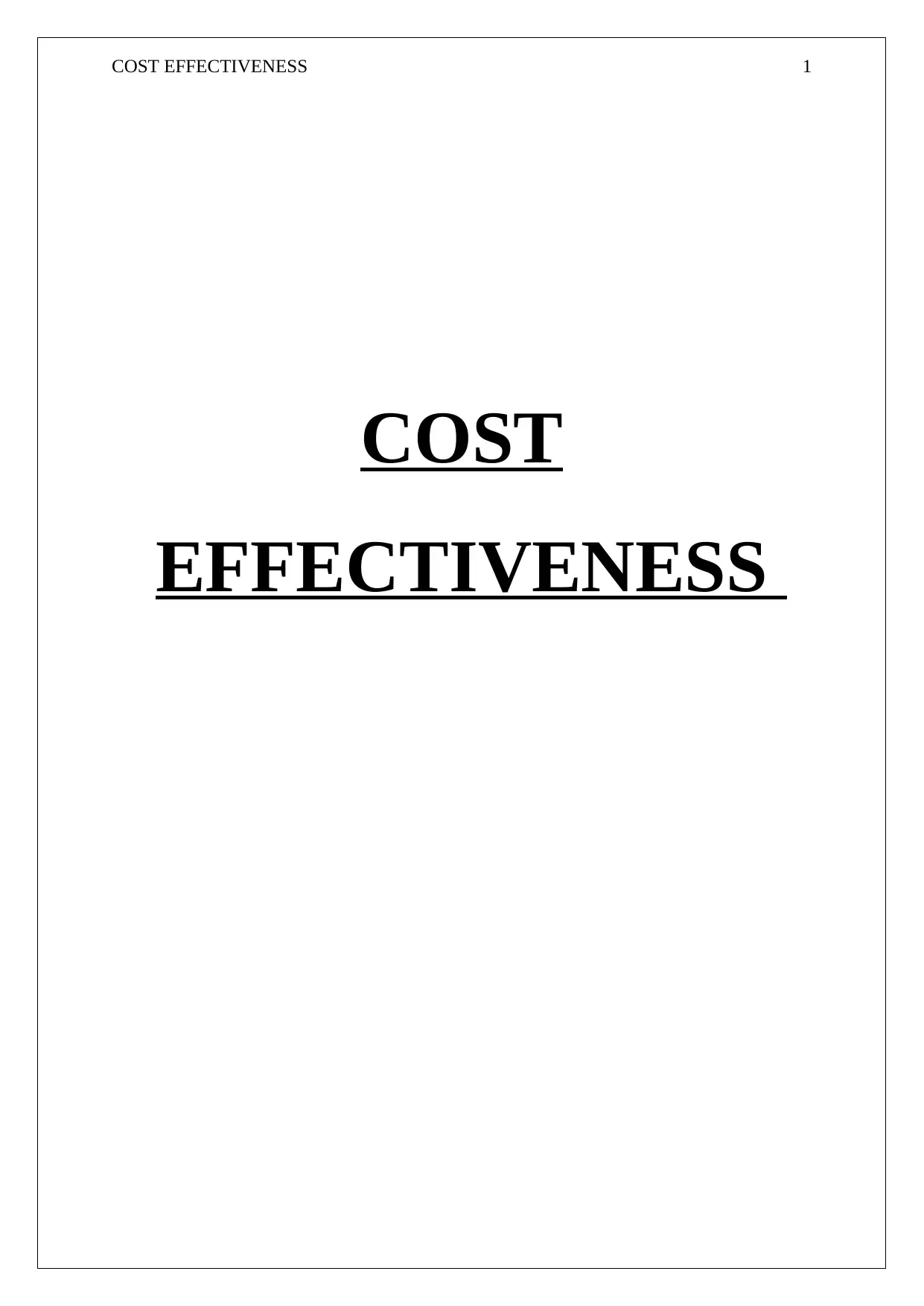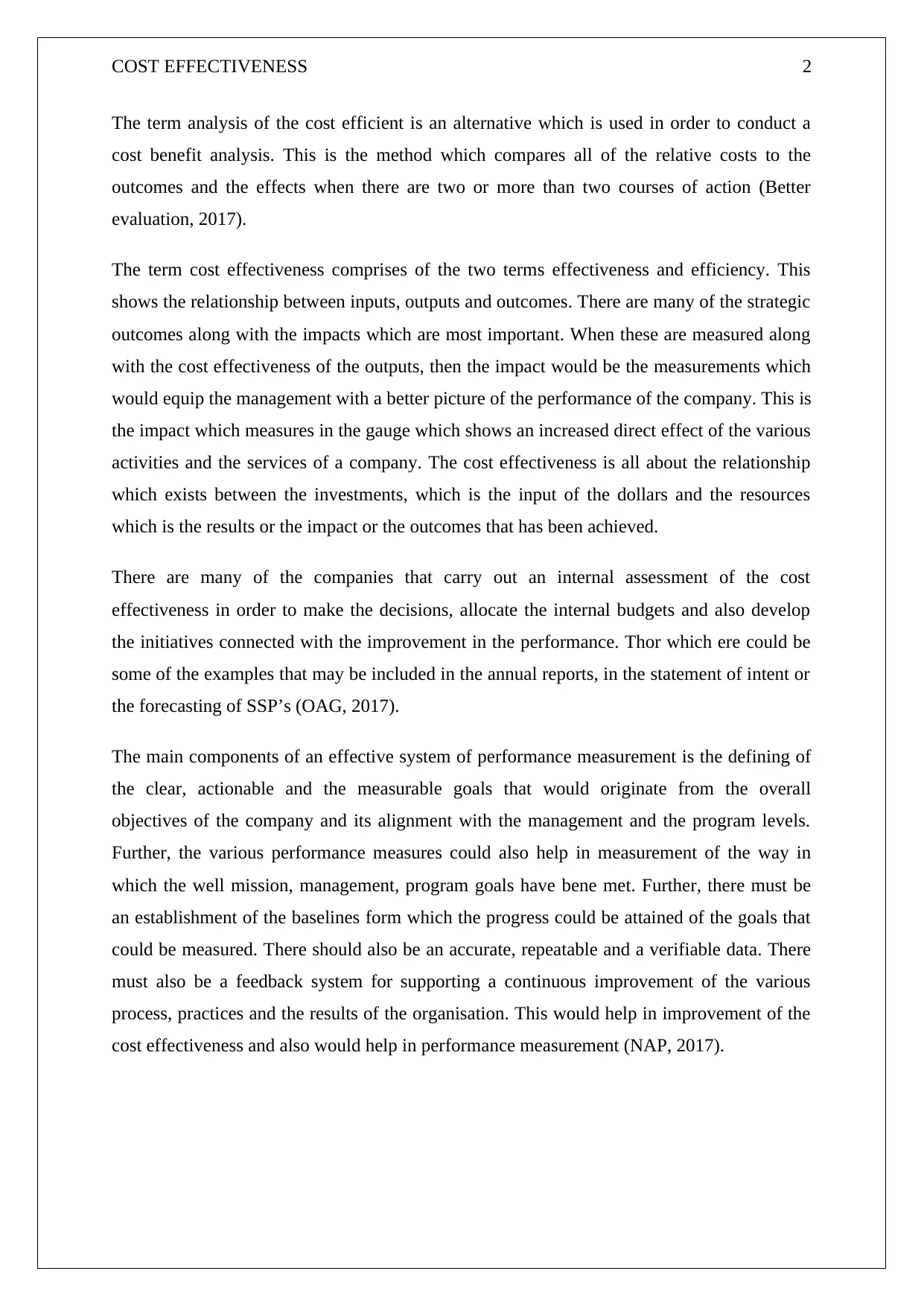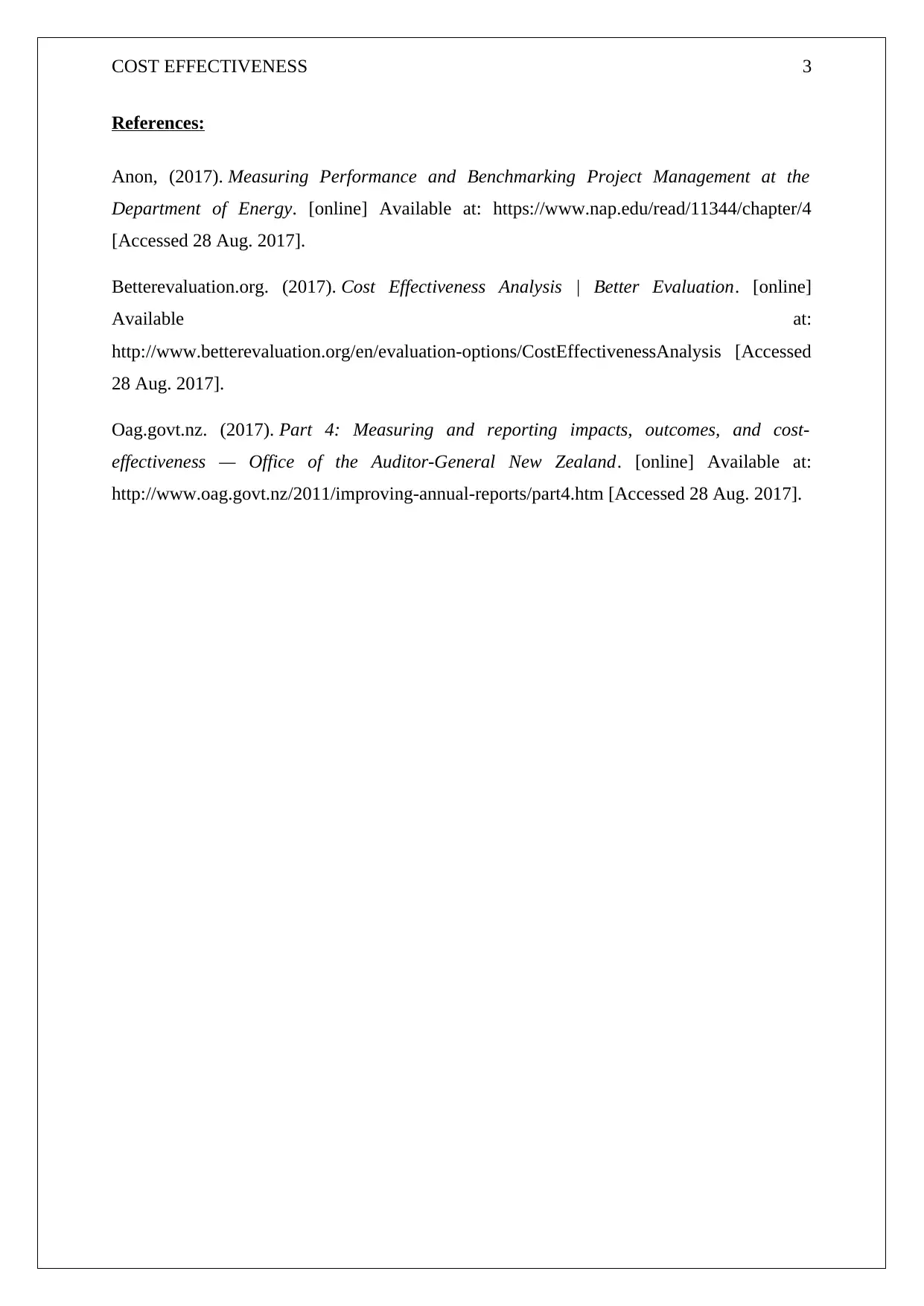Cost Effectiveness Analysis Report - Business Development Module
VerifiedAdded on 2020/02/19
|3
|542
|52
Report
AI Summary
This report provides an in-depth analysis of cost effectiveness, focusing on its application in business development. It explores the concept of cost effectiveness as a method of comparing costs to outcomes, emphasizing the importance of measuring performance and aligning with strategic goals. The report highlights the significance of measuring inputs, outputs, and outcomes to assess efficiency and effectiveness. It also examines the role of cost effectiveness in budget allocation, performance measurement, and the development of initiatives. Additionally, the report provides examples of how cost effectiveness is utilized in annual reports and forecasts, and outlines the key components of an effective performance measurement system, including clear goals, accurate data, and feedback mechanisms. The report references various sources, including Betterevaluation.org and the Office of the Auditor-General New Zealand, to support its analysis and recommendations.
1 out of 3










![[object Object]](/_next/static/media/star-bottom.7253800d.svg)